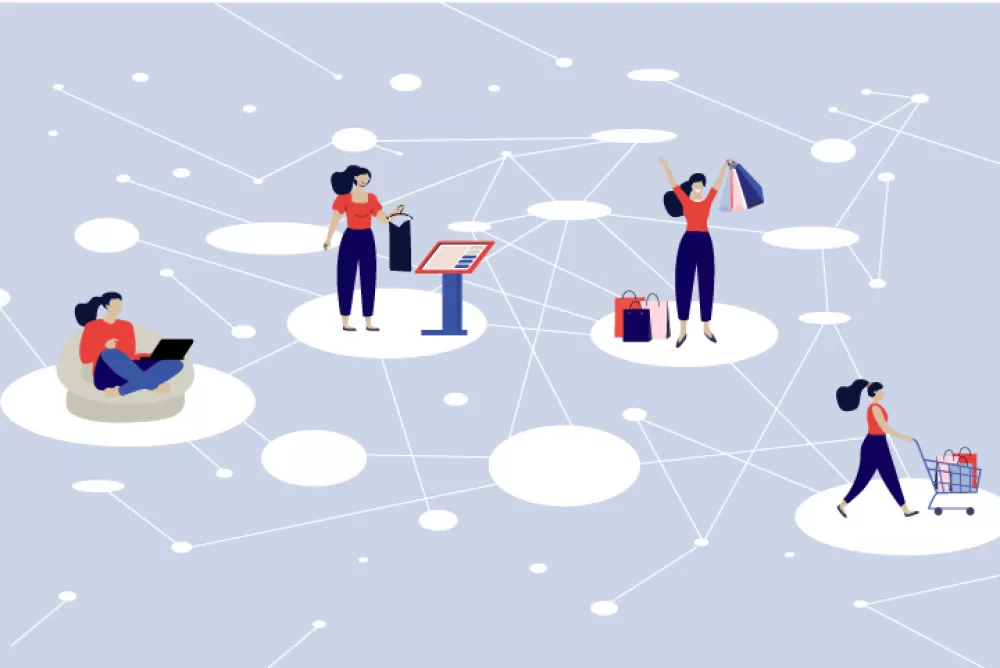Ishita Roy
VP & Head of Delivery, Manufacturing & Consumer Services
Amitabh Saran
Senior Solutions Architect, Consumer Services
Balakrishna Venkata
AVP & Head of Merchandising
A few months ago, an AI-generated ad by Adidas took the industry by storm. Using advanced AI tools, the brand created a playful, vibrant film that featured virtual models in floral-printed apparel. Viewers loved it and got excited for the product launch. But there was no product to be launched (yet). This accomplished something brands spend millions to achieve — a solid proof of concept, direct feedback from its customers, and an equivocal answer to the question – what if.
Since AI became mainstream, organizations have rushed to adopt tools that reap its potential. But no piece of technology can produce overnight results so there is a need for deliberation, balancing impact with cost. Right now, fortune is in favor of low-cost and high-impact initiatives. This is what Adidas achieved skillfully. Companies with a clear vision of the objective will edge out ones who want to adopt trending technology without understanding the problem they want to solve.

Connecting meaningfully to a market of one

We live in times when even a 10-minute delivery can be considered too late. So, retailers are turning to dark stores — micro-fulfillment centers located closer to customers, resulting in lower-cost, high-speed delivery choices. Supermarket giant, Coles recently opened an AI-driven customer fulfillment center in Australia. AI predicts high-demand items based on local buying patterns, optimizes stock visibility, ensures products are always available where and when they’re most needed, and delivers outcomes.

In tune with busy lives and on-the-go schedules, Walmart’s “Text to Shop” responds to “I need ingredients for pasta,” with a shopping list, recipe suggestions, and even a schedule for delivery. Conversational commerce is evolving from assistive to agentic. These systems are laying the groundwork for autonomous retail, where AI won’t just recommend options but take proactive actions. For instance, identifying the need for stock replenishment and placing the order without constant human intervention. However, retailers need to prepare to harness this potential responsibly - ensuring privacy, fairness, and transparency in their AI systems.

Static prices are not optimal because they assume that every purchasing situation is equal and do not consider complex socio-economic situations. In dynamic pricing, AI analyzes real-time data and adjusts prices to hit the sweet spot between profitability and customer satisfaction. Stores can charge more for in-demand items or offer discounts to shoppers during less busy times. For instance, in the highly competitive UK supermarket landscape, Aldi is frequently the cheapest option for a full shopping trolley by about 15 percent but other retailers like Asda, Morrison's, and Tesco are competing using AI-enabled dynamic pricing strategies.
Recipe for being truly shopper-led
Let’s say a retailer already knows a returning shopper regularly shops for a family of four, with two children on the first week of every month and spends 30 percent of the spend on frozen food. This data delivers better recommendations, better conversions. But shoppers give in to habits, impulses, just life stuff so retailers must understand the why behind the purchase list and adjust to shifts and be ready with workarounds.

Recognize me
Identify customer preferences for tailored recommendations

Understand me
Know the ‘why’ behind the purchase to refine and personalize the shopping journey

Inspire me
Surprise and delight shoppers with a deep understanding of affinities, preferences, and behaviours
South Africa's pharmacy retailers are overlaying public health and retail data that is allowing stores to stock region-specific medication, treating health issues more effectively and increasing revenue per square meter.
Hyper-personalization delivers a unique experience to shoppers by creating a real-time behavioral profile for every visitor that is extensible to their household. This is achieved by a deep learning framework, a real-time customer data platform (CDP), and a full suite of experience personalization and marketing orchestration capabilities. In a nutshell, it translates to – recognize me, understand me, and inspire me in real time.
Time for retailers to act
The future of AI in retail is revolutionizing the industry through outcome-based use cases. According to industry estimates 80 percent to 90 percent of technology-driven value creation comes from advanced analytics and traditional AI, which signals large headroom for innovation driven by gen AI – something the industry has not tapped into. At the moment, evolving shopper preferences point to unprecedented potential in areas such as hyper-personalization, smart search, category management, dynamic prices, auto replenishment, and conversational commerce that could lead to meaningful shopper journeys.













